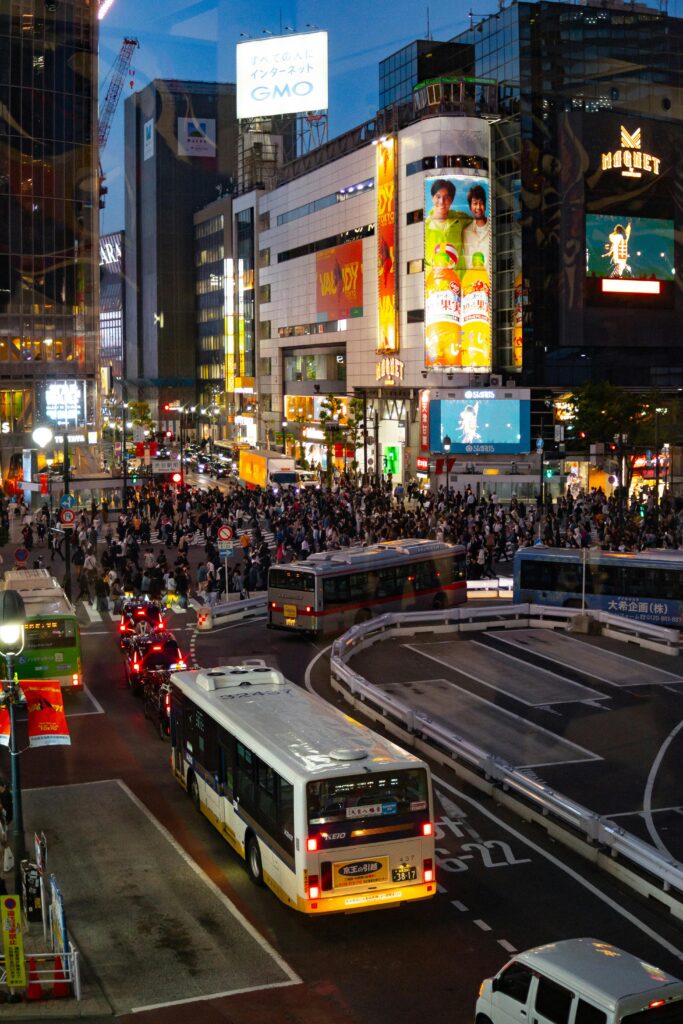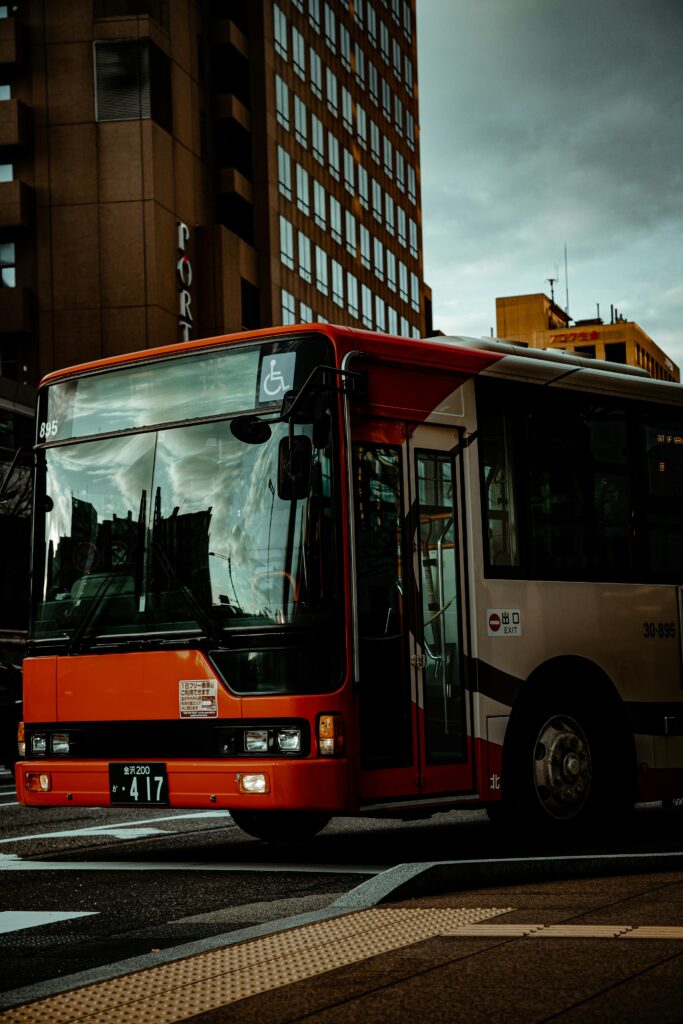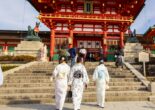Discover Japan’s overnight bus culture! Everything from budget-friendly fares and premium pods to women-only sections, midnight rest stops, and the unique unwritten rules that make this travel experience both practical and fascinating.

I remember the first time I boarded an overnight bus in Japan in 2020, in the height of the COVID pandemic, with my soon-to-be husband at that time. It was late evening near Omiya Station, and the bus stop was already buzzing with travelers, with students with backpacks, families, and couples with their trolleys seemingly going on a weekend escapade, and solo women clutching convenience store snacks all gathered in orderly lines at the ticketing gate and waiting to be assigned their seats. I wasn’t sure what to expect as I had always associated long bus rides with cramped legs and restless sleep, and it was also my first time leaving the Kanto Area! But as soon as I stepped on board, I realized overnight buses in Japan were their own mini culture, with certain unwritten rules, unique amenities, and a surprisingly loyal following that regularly travels in this mode to more far-flung areas.
For less than half the price of a bullet train ticket, I found myself gliding through the night, waking up in a completely different city by sunrise. This is overnight bus culture in Japan is both practical and fascinating at the same time.
Why Overnight Buses Exist in Japan

Everyone knows that Japan is famous for its trains, most especially the ultra-fast and efficient shinkansen. They’re fast, sleek, and incredibly efficient, but they’re also expensive. A one-way trip from Tokyo to Osaka costs around ¥14,000 or more ($90+), and that’s even before considering the costs of booking accommodation. For students, budget travelers, or workers heading home for the weekend, that’s a big expense to put aside!
Overnight buses are considered a cheaper alternative in Japan as prices can be as low as ¥3,000 ($20) if you book early, and even the premium buses rarely exceed ¥10,000. On top of that, you also get to save a night’s hotel cost by sleeping on the bus itself, which overall makes overnight buses incredibly attractive for the standard working class.
University students rely on them to travel during holidays, workers use them to stretch their tight paychecks, and budget-conscious tourists appreciate them a lot for allowing them to see more of the country without making a hole in their pockets.
Booking and Bus Companies

The system is much more organized than you’d expect if you’re used to buses in other countries. The main and most well-known bus companies that are operating are:
- Willer Express — Famous for its pink branding and cocoon-like premium seats with privacy curtains.
- JR Bus — The most widespread line, connected to Japan Rail and runs most of the popular city-to-city routes in Kanto and Kansai.
- Kintetsu, Keio, and Odakyu Buses — Regional lines with specific coverage in certain areas of destination.
Booking is straightforward, and you can use their company websites (often with English support), convenience store kiosks, or even travel agencies to make life easier for you when booking. Tickets come in tiers: from basic “standard seats” to premium pods that look like something out of a spaceship or a sci-fi movie if you are willing to cough up more than ¥10,000.
This tiered system is part of what makes overnight buses in Japan so unique, as they cater to both the tight-budget traveler and the comfort-seeker nomads. You can choose a simple seat, or you can splurge on a “relax seat” with almost-flat recline, footrests, and even a hood for privacy.
The Experience Onboard
The moment you step inside, the atmosphere is mostly pretty quiet, and the bus staff encourages everyone to keep the journey as comfortable for all passengers as possible. Talking is discouraged, phone calls are forbidden, and most buses dim their lights within minutes of departure. I was still watching YouTube videos at 11 PM when one of the staff approached to tell me it was time to turn off my phone and sleep so as not to disturb other passengers. It feels almost like stepping into a moving capsule hotel.
Here’s what you can expect:
- Reclining seats — Many go nearly flat, with adjustable footrests.
- Blankets and slippers — Commonly provided, especially on longer routes.
- Curtains or dividers — On premium buses, each seat has a privacy curtain. We paid an additional ¥200 for the seats with curtains.
- Women-only sections — A unique feature in Japan that ensures safety and comfort.
- Charging ports and Wi-Fi — Becoming more standard. Ours had both a charging port and free unlimited Wi-Fi.
- Midnight rest stops — Around 2 a.m., the bus will stop at a highway service area. Passengers are allowed to stretch, buy drinks, and visit vending machines glowing in the night, or even go to the bathroom if the stop has a proper restroom available. My husband decided to catch rare Pokémon as we waited for the bus to start running again!
It’s not luxury travel, but it’s not totally miserable either. The quiet discipline of Japanese passengers makes it surprisingly restful, especially with specific rules in place like no loud music, no phone conversations, and so on.
Who Rides Overnight Buses
Overnight buses are a cross-section of Japanese society. The types of people you will normally meet are:
- Students — Using buses to head home for holidays or travel on a tight budget.
- Office workers — Heading back to hometowns for the weekend without taking extra vacation days.
- Solo women — Making use of the women-only options.
- Tourists — Backpackers or expats who discover this cheaper alternative to trains.
Comparing Buses, Trains, and Planes
So why choose the bus? Here’s how it stacks up:
- Shinkansen: Fastest (Tokyo–Osaka in ~2.5 hours), but most expensive. Great for short trips where time matters.
- LCC flights: Sometimes cheap, but airports are far from city centers and security checks and travel time to the airport make them less convenient.
- Overnight buses: Cheapest option. Travel while you sleep, save on hotels, arrive in the city center. Downside: lack of comfort compared to trains.
It really comes down to priorities: time vs money vs convenience.
Quirks of Overnight Bus Culture
There are small details that make this experience uniquely Japanese:
- Politeness at midnight rest stops — Even at 2 a.m., people line up neatly for bathrooms.
- Pre–booking guarantees seats for you– It would be a scene straight out of a movie to have to stand on a crowded bus for 8 hours or more!
- Punctuality — If the bus is scheduled for 10:00 p.m., it leaves at exactly 10:00 p.m., whether you’re on it or not.
- Service areas as mini-destinations — Highway rest stops have shops, regional snacks you may otherwise never get to try, and more.
- Amenities arms race — Some companies add massage chairs, footrests, even privacy pods to attract riders. It is not very common, though, and only a select number of bus lines actually offer these amenities.
Reflections on Travel in Japan
What I found fascinating about overnight buses is how they reflect Japanese values in every possible way, such as efficiency, discipline, and practicality. They aren’t something you would think of as glamorous at first, but they’re reliable, affordable, and accessible to almost everyone of all walks of life.
In a country where so much travel content is dominated by shinkansen and flights, buses reveal a quieter, more down-to-earth side of getting around. They’re for students trying their best to stretch their allowance, workers balancing their limited time and money, and travelers who don’t mind trading comfort for savings.
If you have been planning a trip within Japan and are unsure about what the best mode of travel is, give overnight buses a chance! They might surprise you in ways you did not expect and forever change your views on public travel!
Stay tuned for more exciting content like this! Follow us on our social media platforms and check out our blog regularly to stay updated on the latest news, trends, and insider stories from Japan. Don’t miss out on future updates — sign up for our newsletter for exclusive content delivered straight to your inbox!
Related Articles
Warning: Undefined array key "sfsi_threadsIcon_order" in /home/veremosglobal/tokyoroomfinder.com/public_html/blog/wp-content/plugins/ultimate-social-media-icons/libs/controllers/sfsi_frontpopUp.php on line 165
Warning: Undefined array key "sfsi_blueskyIcon_order" in /home/veremosglobal/tokyoroomfinder.com/public_html/blog/wp-content/plugins/ultimate-social-media-icons/libs/controllers/sfsi_frontpopUp.php on line 170
Warning: Undefined array key "sfsi_bluesky_display" in /home/veremosglobal/tokyoroomfinder.com/public_html/blog/wp-content/plugins/ultimate-social-media-icons/libs/controllers/sfsi_frontpopUp.php on line 266



